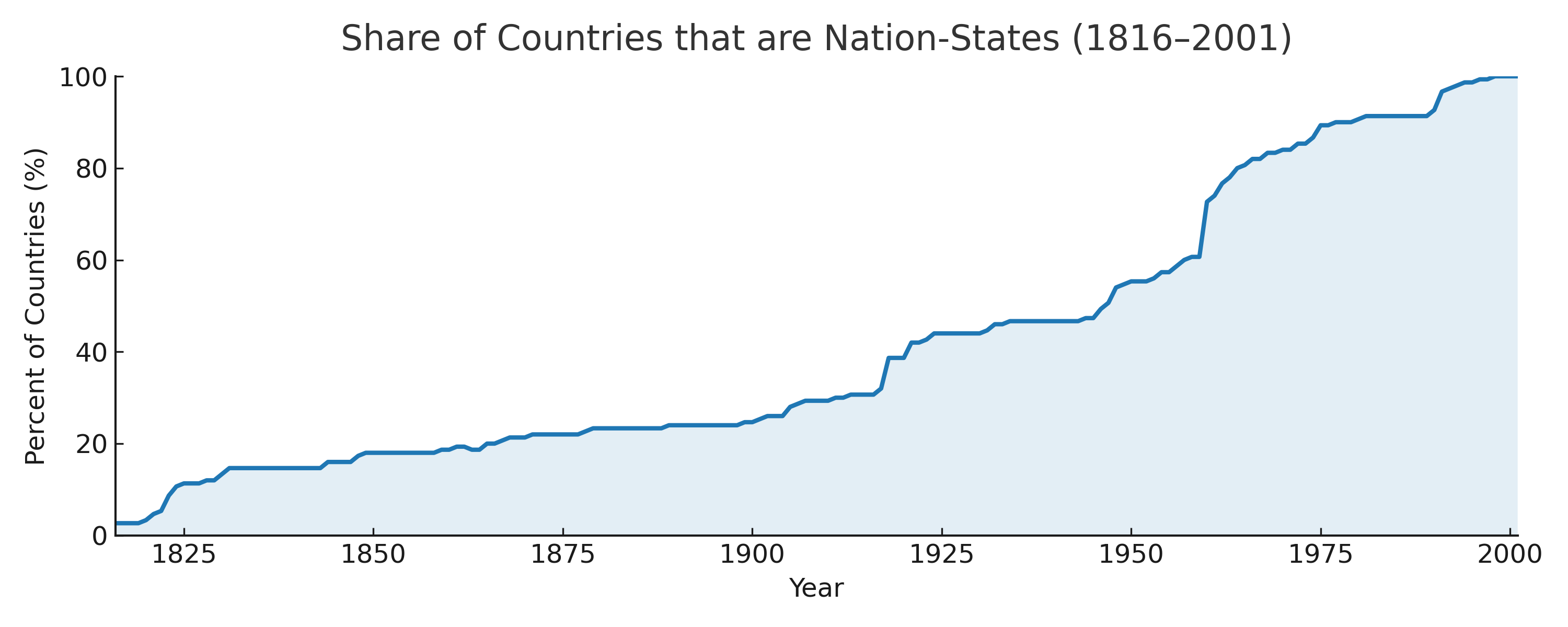Contested Unity
Published:

Full paper (PDF) — draft in progress; comments welcome at eizadi@sfu.ca.
Imagined communities, then a nagging question
After finishing a paper on the institution of the nation-state (the figure above is created from the data in a related work by Andreas Wimmer), I kept circling the next question: what do we actually mean by national identity—at least in economics?
“Nationalism: an infantile disease. It is the measles of mankind.” — Albert Einstein
That line sticks because the bad reputation is not undeserved. Nationalism can mobilize solidarity—and exclusion. So what do development economists do with this tension? One impulse emphasizes a shared identity for coordination, trust, and state capacity. The other warns that nation-building can crowd out pluralism or backfire.
A tiny taxonomy I find useful
Here’s the organizing thought behind my paper: if we accept a simple chain—
nation-state → nation-building → (a technology of) coordination → national identity,
—then the “technology” is just public policy, and in modern states the main lever is redistribution. In other words, identity formation isn’t mystical; it’s co-produced with the budget choices the state makes.
Concretely, I model a majority allocating a fixed budget each period across:
- a majority-specific good,
- a minority-specific good,
- and a common good (curriculum, shared language, civic programs).
The common good yields some value today and raises the chance of a more civic, integrated polity tomorrow. Identity is the outcome of this repeated bargaining over public goods, not a primitive.
Three regimes, in plain language
Exclusionary. The majority prioritizes itself. No weight on minority welfare or preferences; little to no integration effort.
Split / “multicultural” appeasement. Each group gets its preferred good. The pie is divided, coordination remains costly, and everyone pays for the duplication.
Common-good (civic) regime. The state invests in a not-anyone’s-ideal common good—civic infrastructure that can pave the way for a stronger, more legitimate welfare state later.
The paper’s point isn’t to moralize these categories, but to show when each emerges. Two forces do most of the work: a political trade-off (immediate group benefits vs. deterring conflict and nurturing a civic future), and intertemporal misalignment (today’s citizens undervalue tomorrow’s integration).
This post sketches the intuition. The working paper puts the pieces into a dynamic model and traces the conditions under which polities drift toward exclusion, get stuck split, or converge to civic nationalism.